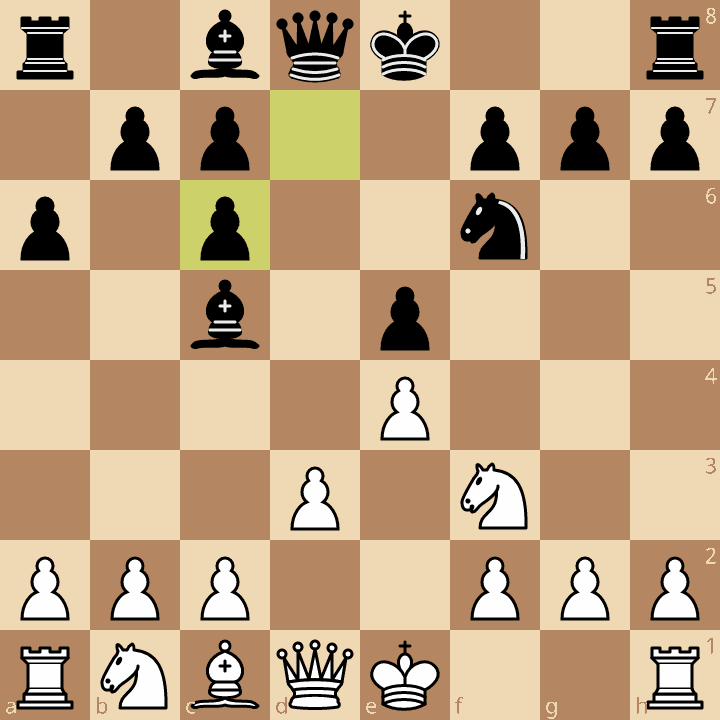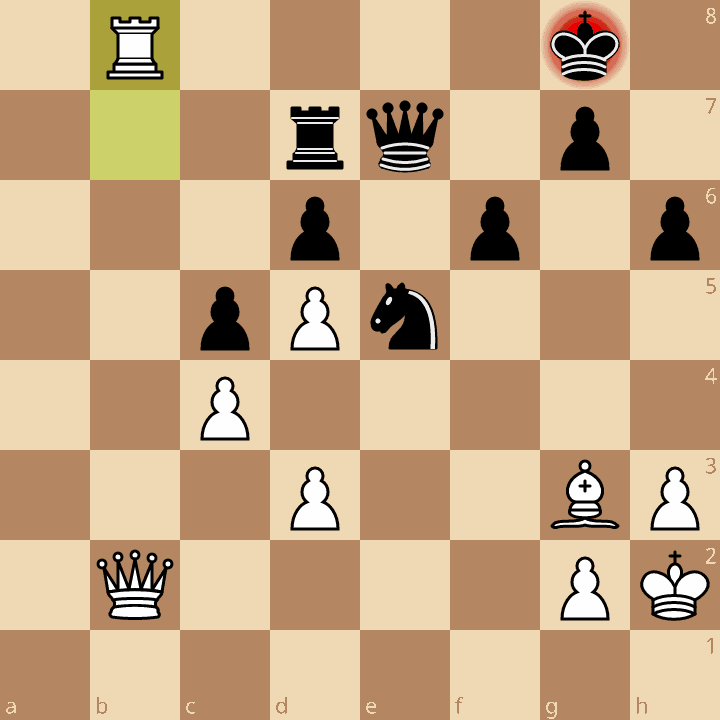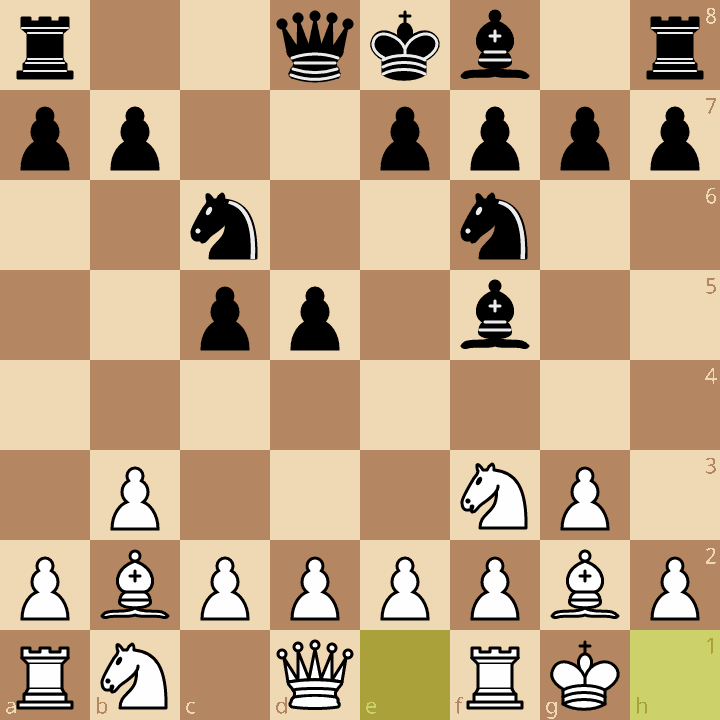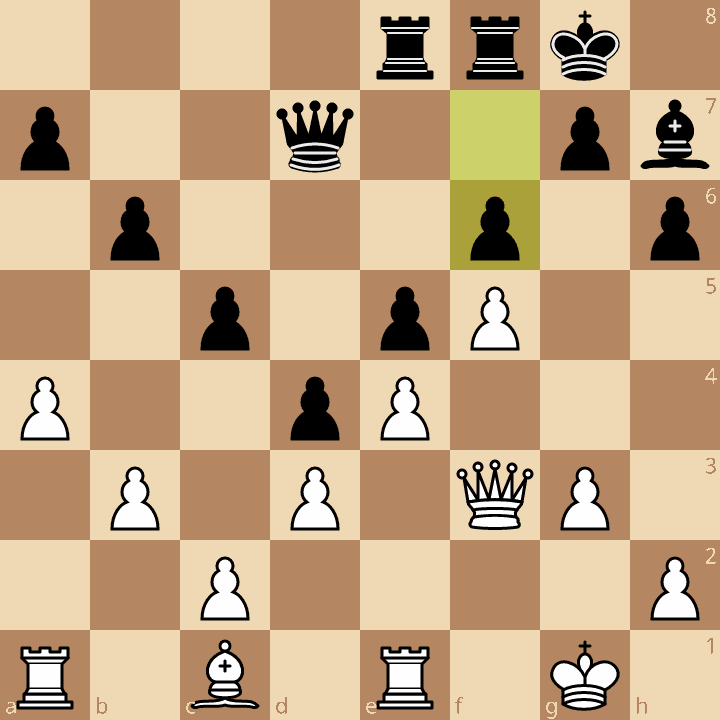FIDE Candidates 2024 Round 9
Vidit delivers again! Nepo escapes!
It was an exciting round 9 for the candidates, with interesting games on every board. We’ll save Vidit and Nakamura for last, but let’s look at the others.
Gukesh D - Praggnanandhaa R
This game started off as an Anderssen Variation, but Gukesh decided to go for something a bit different with a delayed exchange on c6.
I wonder if this represents a bit of an improvement for White compared with the normal exchange. Gukesh seemed to have a nagging edge with White for most of the middlegame, but in the end Pragg was able to neutralize it and the game ended peacefully on move 41.Rb8+
There’s nothing to play for here, so it makes sense.
Alireza Firouzja - Nepomiachtchi
We got a very rare treat at the top level of chess: an actual Nimzo-Larsen Attack.
1.Nf3 d5 2.b3
What the what? Surely this was a surprise for Nepo, but not anything he couldn’t handle.
2…Nf6 3.Bb2 Bf5 4.g3 c5 5.Bg2 Nc6 6.O-O
This tabiya is typical of the hypermodern school of chess: White has invited Black to occupy the center with pawns, while setting up his own control through the extended reach of the pieces. The knight and bishop control e4, the light-squared bishop looks at c6 and b7, and at an opportune moment White could potentially play a knight move and expose an attack along that diagonal. White also reserves the option to break in the center later with the c-,d-, or e-pawns, which could come with a lot of power at the right time. Theoretically Black is in great shape, but because play isn’t forcing, there’s a lot of room for players to make mistakes and discover fire on the board.
A few moves later, it was clear that Nepo was in danger of being burned.
Some piece trades have occurred. White broke with e4 and Black released the tension by responding with d4, and now the center is locked up. The b2-bishop looks unemployed as it “bites on granite” against the d4 pawn. Black’s play should probably be directed towards the queenside in which directly his pieces point. The e4 pawn stands in the way of an f5-break. White has decent control over the game, despite the lack of space — the trade of knights on the e5 square has helped alleviate this from a disadvantage to a mostly neutral factor, since Black doesn’t have play on the kingside at the moment. Alireza has just played 14.a4, preventing a break with b5.
Nepo responded 14…e5?! This closes the center and actually helps White start an attack on the kingside, since now Black’s typical source of counterplay (e.g. an attack in the center) is too slow, if not impossible — all the tension has been released since there are no lines for Black to open. One idea instead would have been 14…b6, preventing the cramping move 15.a5, and threatening an eventual a6-b5 himself, opening up lines on the queenside and gaining counterplay.
Alireza went for the most combative response: 15.f4
Now this is looking quite like a King’s Indian Defense with reversed colors (or, in other words, a King’s Indian Attack). This is one thing I love about chess. The possibility of one typical opening to lead to a position known from another. Black has a really difficult position. The h7-bishop is about to be made more useless than the b2-bishop. A knight move to f6, where it acts as a defender, is met by fxe5 when it must make way for White to continue the attack. Nepo’s position continued to deteriorate even as pieces were being traded off the board.
Firouzja has played 22.f5, and now we can see the plan of h3/h4+g4+g5 in order to crack open the kingside. The b2-bishop has found a new vocation, and there’s even the possibilities of sacrificing on h6 at the right moment, if not just supporting the g5 push. Nepo makes an ugly move, but ugly moves have been his specialty when defending worse positions all this tournament:
22…f6!
Now g5 is controlled twice and pushing to open it up further entails a certain amount of risk. The engine claims that White is better because of the space advantage, but it’s hard to see how this position could ever crack open. Nepo’s move also releases the Black king from the kingside, allowing him to make an instructive march to the queenside away from White’s attacking forces:
23.g4 Kf7! 24.h4 Ke7 25.Re2 Kd6 26.Bd2 a5! (closing the a-file to any intrusion) 27.Rh2 Kc7!
And while White may be better according to the engine, it’s hard to see how he could possibly engineer a breakthrough. The game was later drawn, as Firouzja could not find a hole in any wall of Nepo’s fortress. Nepo once again escaped a bad position and kept his first place lead.
Nijat Abasov - Fabiano Caruana
In a Queen’s Gambit Declined, Abasov and Fabi were in an endgame by move 11:
This is a very balanced endgame, with White’s bishop pair was compensated for by Black’s superior structure. Black will win back the pawn shortly, at which point it’s a matter of who can outplay the other, if that is at all possible. Overall, both sides should hold, but it was interesting to see how Fabi was able to put a lot of pressure on Abasov’s position.
11…Ng4 12.Ke1 Nxe5 13.Be2 Rd8!
Fabi dutifully works to get rid of Abasov’s one advantage in this position — the bishop pair.
14.Nf3 Nd3+! 15.Bxd3 Rxd3
This constitutes not a winning advantage for Black, but a comfortable edge. The a- pawn and c-pawns are weak, and White’s bishop has seen better days. A few moves later, Fabi missed an opportunity to continue putting pressure on Abasov’s position.
Fabi played 19…Nc6. It’s a good move, but it also allows White to cover his weak a-pawn by moving it to a dark square, out of the reach of Black’s bishop, so Abasov played the move that Fabi should have played for himself: 20.a5!
Vidit Gujrathi - Hikaru Nakamura
We got a typical Two Knights Italian at first, but this time Nakamura went for the interesting and counter-attacking h6+g5+Bg7 plan.
Compared to the typical Giuoco Pianissimo, Black’s position isn’t nearly as solid, but also, Black has a lot of potential energy to unleash across the long a1-h8 diagonal. Personally I have never enjoyed meeting this defense with the White pieces. However, Vidit’s a pretty strong player, and soon he was given the opportunity to make good on his skills.
Here Nakamura had been orchestrating the c5 break in order to extend the potential reach of his bishop and put pressure on the dark squares from the bishop on g7. He sprang it: 21…c5. Vidit didn’t take long, and decided to face Hikaru’s plan head on: 22.dxc5?!
Probably best was the move 22.Ng4, in order to prevent the move Nf4 (due to Bxf4). However, Nakamura also missed his chance and took the newly opened file with tempo with 22…Rxc5?! 23.Qd1 Nf4, missing Vidit’s 24.b4! After 24…Rcc8 25.bxa5 bxa5 26.Bxa5 Nc6 27.Bc3, Naka lost the plot.
27…Nxe5? (he should keep pieces on the board instead) 28.Bxe5 Bxe5 29.Nxd5 Nxd5 30.Nxe5 Qe6
31.Rd3! (Vidit now controls the d-file) Nf4 32.Rd6! Qa2 33.Rxh6! Qb2?
This is a difficult position to play, so this error makes sense. Stockfish says 33…Rb8 was better (the threat is 34…Rxe5! 35.Rxe5?? Rb1 — goodbye white Queen). White is still much better but Black can put up strong resistance.
34.Qd7!
Vidit goes for the throat. Black’s king is surrounded and his pieces are in no shape to defend themselves.
34…Qb3
Attempting to defend the f7 square.
35.Qf5! (Threatening Qh7+ and Nd7#) Ng6 36.Rxg6+ 1-0
Nakamura resigned. Both g-pawns will fall with check, after which point White will lift a rook and organize a checkmate with the heavy pieces.
Once again, a good day with well-fought games. The future of chess continues to look very Indian, and I for one cannot wait to welcome our new overlords.





















